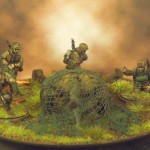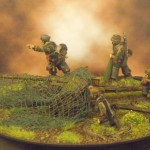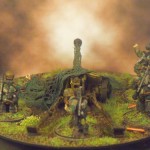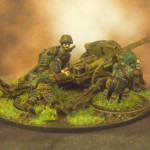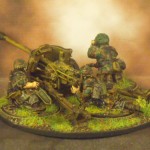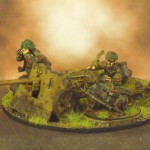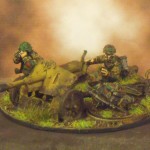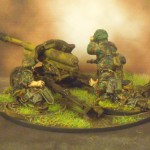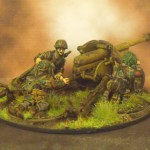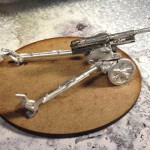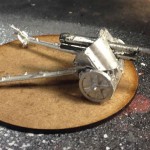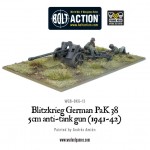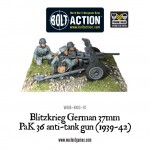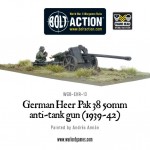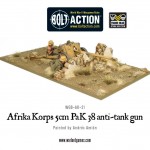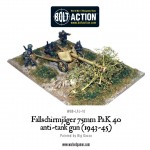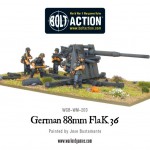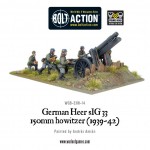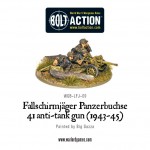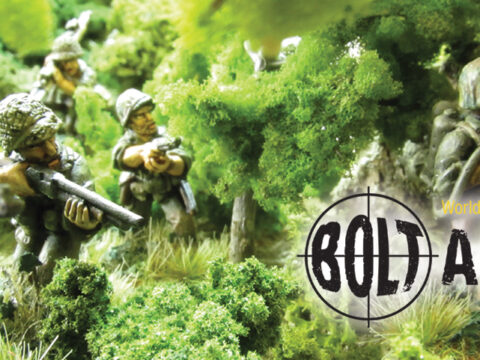Dan Hoyt of the RedOverBlue blog has been busy as ever – beavering away with all manner of projects. This week, he’s graciously offered us the chance to re-post his conversion article for the German Pak 97/38 – and while we’re at it, we thought we’d throw in some pictures of his other German anti-tank guns!
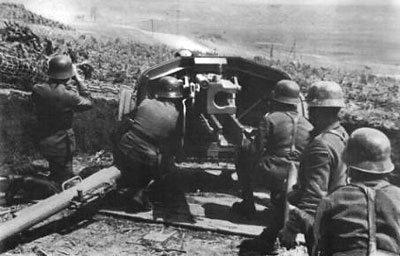
Dan: In this article I am showing off my recently completed set of German anti-tank guns. I only purchased the Pak 40 model featured here; the other guns were given to me by my good friend Phil as they were unneeded for his 1939 Polish project. Since I base all my gun crews individually it was not an obstacle having more guns than crew, I can simply swap crewmen between guns as needed for each game. Though these guns are featured in this article with Fallschirmjager crews, once I do another German force (which I intend in the future) I can recrew these guns with the applicable figures.
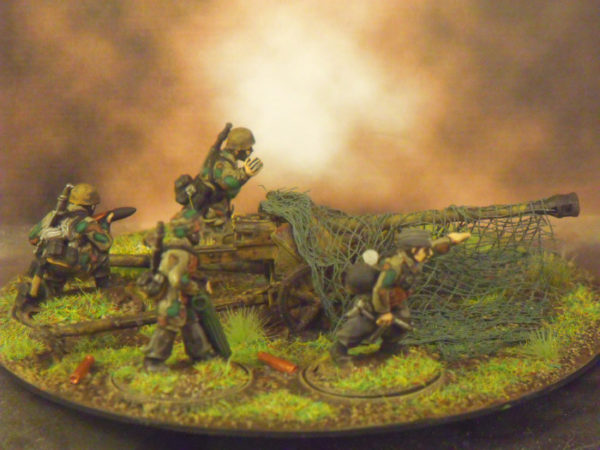
The Pak 40 is a beast of a model. It comes with four crewmen and is so sizeable I felt obligated to give it a large base, placing it on a discarded CD. My intent with this model was to have it lying in ambush, hence the camouflage netting. The netting was easy to model, being simple non-woven medical gauze that has been sprayed with olive drab aerosol primer and then soaked in watered down PVA; you will see the same technique on more of my models.
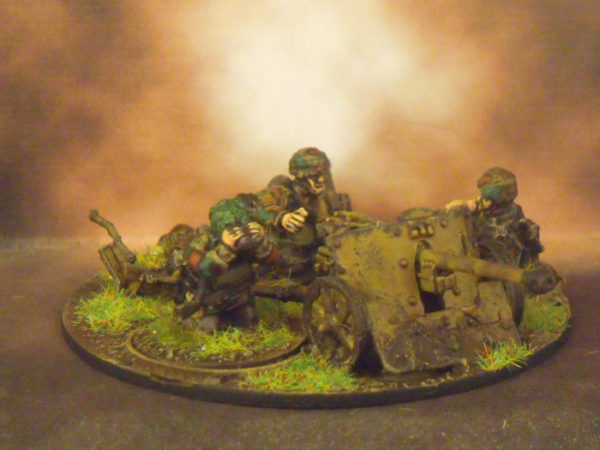
The Pak 38 is a fairly straightforward model, fitting onto my usual 60mm round team base. As with the other three guns (and the rest of my Fallschirmjager army for that matter), I went for a beaten up and well used look. This was accomplished via the “sponge method” of weathering which I hope to detail in a later blog post. The crew being used on this model are actually from my panzerbusche 41 team.
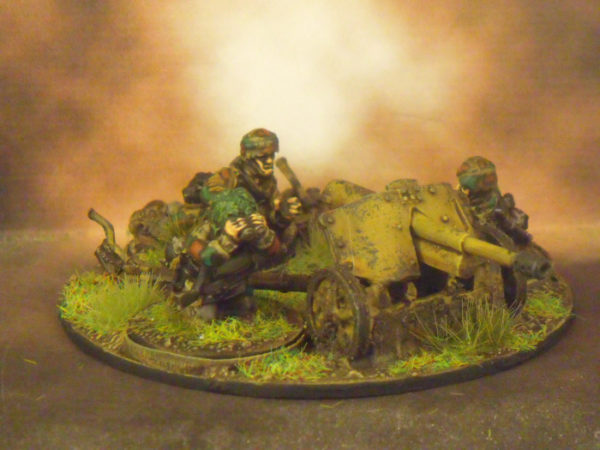
This is my favourite of the three models. Phil had given me two Pak 38 models (with no crew) and though I was able to use the first for its intended purpose, I did not really have a use for a second medium anti-tank gun for my Fallschirmjagers. After doing a bit of internet research (read: wikipedia) I discovered the Pak 97/38. This was an expedient anti-tank gun devised by the Germans as a stop-gap. Captured French 75mm field gun barrels were married up with the carriage of the Pak 38, given a new muzzle break and special HEAT (High Explosive Anti-Tank) ammunition. Coincidentally Phil had an extra French 75mm field gun (from an unknown manufacturer) floating around that he was willing to donate to my cause.
With very little work I was able to construct my own Pak 97/38, fabricating the muzzle break out of plastic tubing. Though there are no rules for the Germans using the Pak 97/38 in Bolt Action, I doubt I will have any trouble coming up with something.
The Conversion
The conversion itself was not particularly complex. I assembled the Pak 38 just short of attaching the barrel and gun shield. The barrel from my donated French 75mm howitzer was in pretty rough shape, as can be seen in the photos. After what seems like quite a beating, much of the detail around the breach mechanism was damaged. For this reason I decided upon a “well used” theme to my painting scheme. The French barrel fit quite nicely, if a bit high, on the mount of the Pak 38. Once the glue on this was dry, I fit the Pak 38 gun shield over the French barrel. This was a bit of a tight fit and required some trimming on the inner edges of the shield in order to get a good fit.
The most complex part of the conversion was the muzzle break. Part of the conversion process the Germans did when they created the Pak 97/38 was the inclusion of a new muzzle break. This part of the weapon is quite unique, with large perforations reminiscent of many submachine guns of the period. To construct this piece, I cut a small length of 3mm polystyrene piping (about 4mm long). I filed the edges to create a slightly bevelled edge. To create the perforations I used a small drill (pin vice); this is probably the most finicky part of the entire conversion as the plastic piping is quite small, as is the drill bit. With the new muzzle break glued to the end of the barrel, with the tip of the French barrel fitting snuggly inside the pipe, the model is complete.
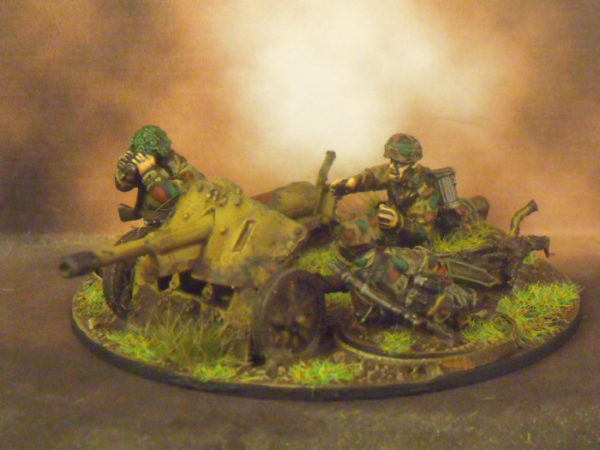
To pick-up your own German Anti-armour firepower, head over to the Warlord webstore now and take a look!

